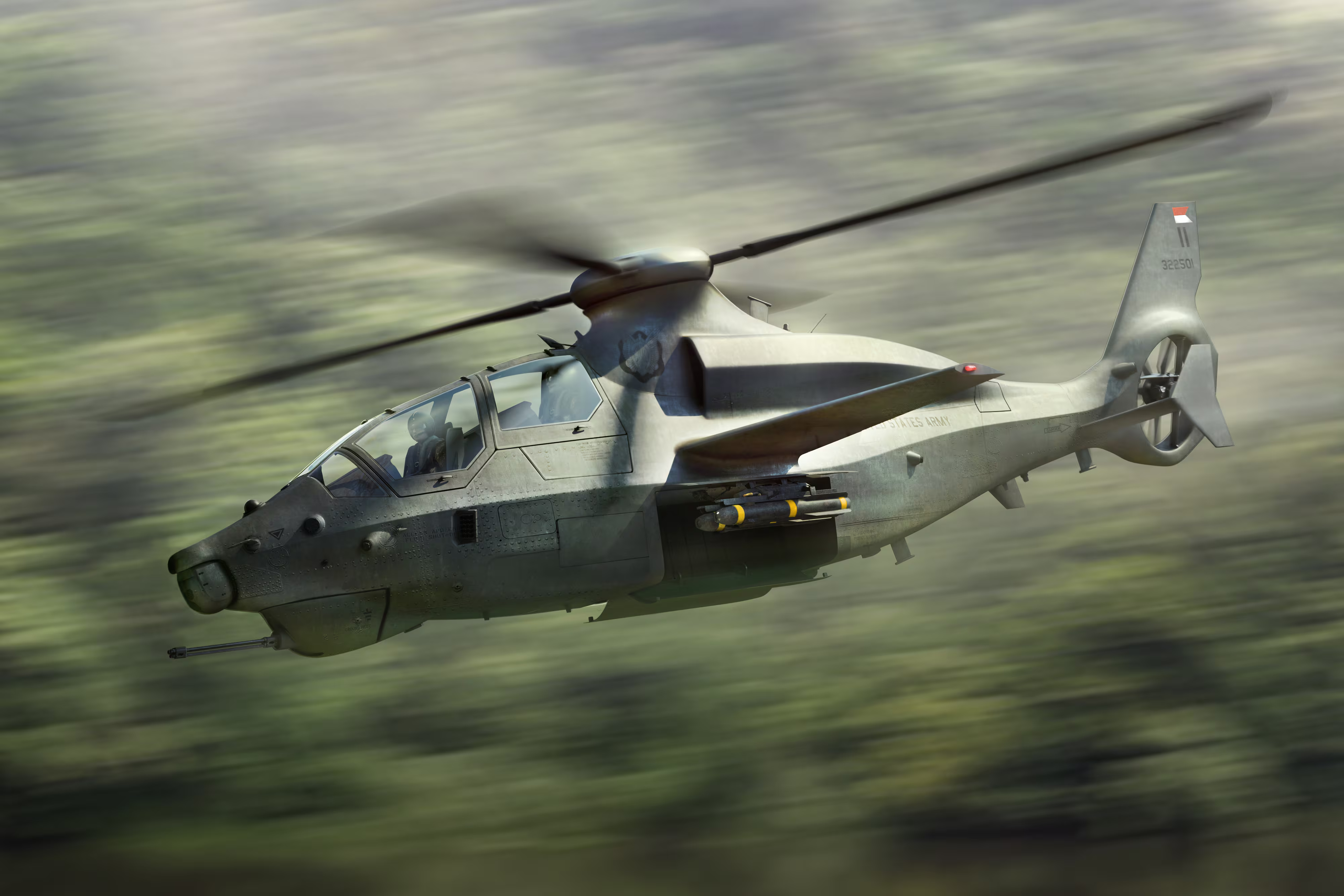WASHINGTON — Lockheed Martin’s Sikorsky and Bell have each begun to forge the aircraft that will compete to become the U.S. Army’s Future Armed Reconnaissance Aircraft (FARA) expected to be fielded by 2030.
“It’s become very real to me,” Brig. Gen. Wally Rugen, who leads the Army’s effort to develop future vertical lift aircraft, told Defense News in a recent interview. “We’re seeing forgings, castings, transmissions, gear boxes, blades, cockpits, airframes, real tangible things that are already built, already manufactured and going together,” he said.
Final designs on the aircraft are due from both Bell and Lockheed in November, according to Rugen. And despite complications across the defense industry due to the coronavirus pandemic, both vendors “see no problem” achieving that original schedule.
The Army will take about a month to review those final designs, Rugen said, and then the service will conduct a readiness review with Army senior leaders in mid-December, where the hope is the program will get the final go-ahead.
The service is pushing for the prototypes to fly for the first time in the first quarter of fiscal 2023.
One major factor in getting those prototypes airborne is whether the Army’s Improved Turbine Engine Program (ITEP) engine is ready to drop into the aircraft. The ITEP engine has been developed to replace the engines in UH-60 Black Hawk utility and AH-64 Apache attack helicopters, but will also be FARA’s first engine.
Key to progress with that is getting the first engine into testing starting in late 2021, Rugen said. “That is our engine and that is our critical path really through the engine,” he said.
General Electric, which is building the ITEP engine for the Army, “understands that,” Rugen said. “They’ve had a lot of friction to fight through and they’re fighting through it very well from what I can see,” he added, referring to the impact of the pandemic on the company’s progress.
While the ITEP engine schedule has not slipped, it has now essentially lost any padding and is aligned with the original schedule, Rugen said. General Electric and the Army had previously found some ways to accelerate the timeline.
In addition to ITEP, the Army is also planning on furnishing a gun and a modular effects launcher to both competitors.
The 20mm gun has begun firing live rounds and will fire 285,000 rounds “this year,” Rugen said.
The modular effects launcher is in the prototyping phase, but Rugen added that, like the 20mm gun, it will fly at Project Convergence 2021 on a FARA surrogate aircraft.

Sikorsky has pitched a design based off of its S-97 Raider that it is calling the Raider X. The S-97 has been flying for more than five years. “These flights have produced tremendous data that inform our flight program, help refine the design of Raider X … and reduce risk for the program,” Jay Macklin, Sikorsky’s business development director for FVL, told Defense News.
The company began building physical components last year in anticipation of a contract to build a prototype, he said. Sikorsky also has had key suppliers under contract for more than a year.
During the flight test period, Sikorsky plans to be “more focused on validation of design versus traditional methods of fly-fix-fly that have been used on many past aircraft across industry,” Macklin said.
Bell unveiled its design — the 360 Invictus — for FARA a year ago just ahead of the Association of the U.S. Army’s annual conference.
Bell has completed multiple design and risk reviews and reports it is on schedule for its build, according to Chris Gehler, vice president and program director of the Invictus program.
The company has completed critical design reviews for rotors and drive systems, and the team has been accepting parts at its Amarillo, Texas, facility where it will soon begin to build the aircraft, Gehler told Defense News.
Jen Judson is an award-winning journalist covering land warfare for Defense News. She has also worked for Politico and Inside Defense. She holds a Master of Science degree in journalism from Boston University and a Bachelor of Arts degree from Kenyon College.








